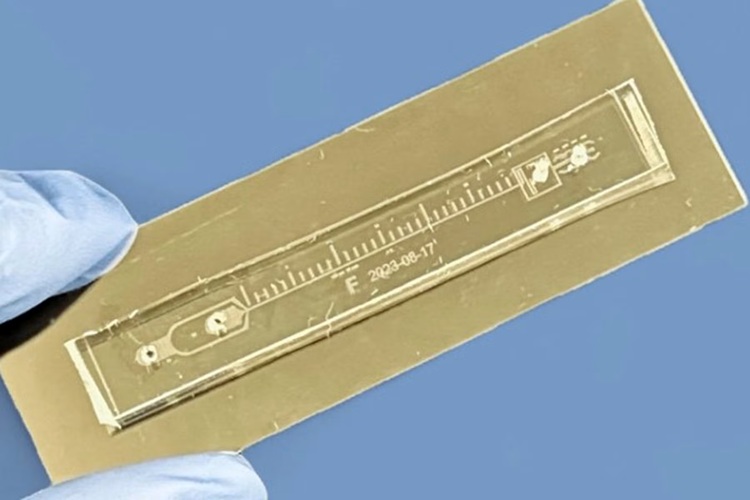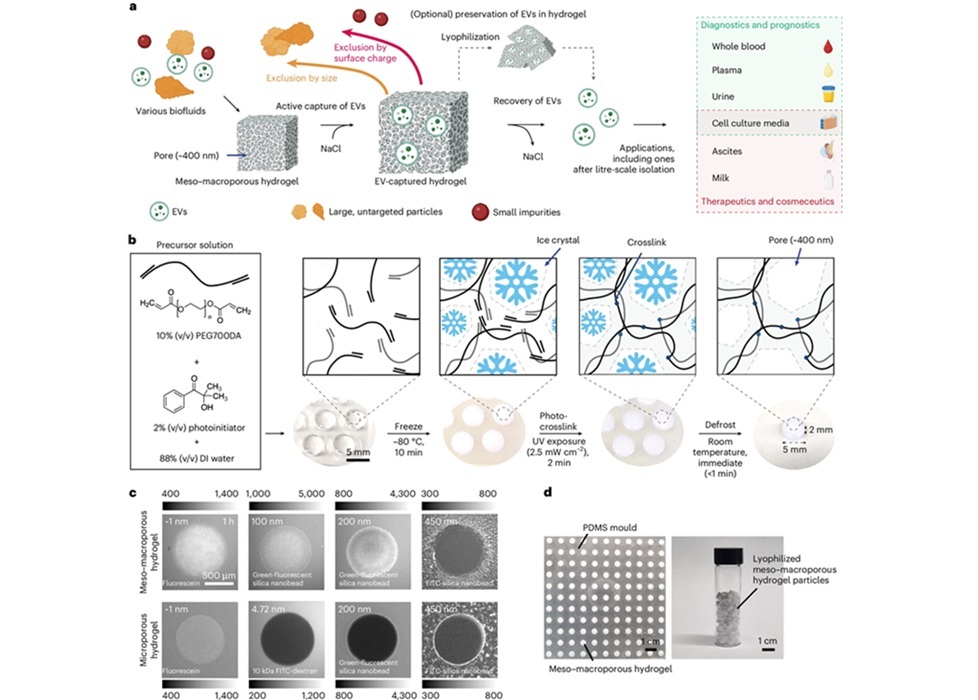Noninvasive Prenatal Test Diagnoses Hemolytic Disease of Fetus and Newborn
|
By LabMedica International staff writers Posted on 05 Oct 2022 |

Alloimmunization occurs in about 1% of pregnancies and is when the pregnant patient makes RBC antibodies as a result of foreign blood mixing. These antibodies can cross the placenta and attack the unborn baby. Hemolytic Disease of the Fetus and Newborn (HDFN), a rare but potentially deadly resulting condition, can have devastating effects on the fetus including anemia, hyperbilirubinemia, and death. Due to the potential severity of HDFN and the previous lack of non-invasive risk assessment tools, alloimmunized patients are typically monitored closely until delivery, sometimes via weekly blood titers and ultrasounds. This close monitoring determines if an early term delivery or an intrauterine transfusion may be indicated for the pregnancy. Now, a new fetal antigen single-gene non-invasive prenatal test (sgNIPT) for pregnant patients who are alloimmunized with C, c, D, E, Duffy (Fya), or Kell (K) red blood cell (RBC) antibodies looks for the presence of the genetic variants that code for the corresponding fetal antigens.
BillionToOne, Inc. (Palo Alto, CA, USA) has launched UNITY fetal antigen sgNIPT, a new addition to UNITY Screen, that is available at 10+ weeks gestation, and may streamline management for most pregnancies thought to be at risk for HDFN. The UNITY fetal antigen NIPT report will show if the fetal antigen of interest is detected or not detected, providing stronger clinical conviction for those patients who require rigorous monitoring. Importantly, it is expected that up to 65% alloimmunized pregnant patients will not be carrying fetuses that express the antigen(s) of interest. This may drastically minimize unnecessary healthcare resources, decrease monitoring visits, and, most importantly, reduce unnecessary anxiety for many families. Analytical validation data show the test sensitivity and specificity is >99.9%.
"We are thrilled to launch our UNITY fetal antigen sgNIPT. While HDFN only affects 1% of US pregnancies, it can have dire consequences, and the extra, and often unnecessary, monitoring can be a significant source of anxiety for patients," said Oguzhan Atay, BillionToOne CEO. "This is yet another example of our powerful Quantitative Counting Templates (QCT) technology and its application to single-gene NIPT fulfilling a previously unmet medical need. Providing up to 65% of alloimmunized patients with greater peace of mind that their babies are low risk is the type of patient-oriented product we always strive for."
Related Links:
BillionToOne, Inc.
Latest Hematology News
- Platelet Activity Blood Test in Middle Age Could Identify Early Alzheimer’s Risk
- Microvesicles Measurement Could Detect Vascular Injury in Sickle Cell Disease Patients
- ADLM’s New Coagulation Testing Guidance to Improve Care for Patients on Blood Thinners
- Viscoelastic Testing Could Improve Treatment of Maternal Hemorrhage
- Pioneering Model Measures Radiation Exposure in Blood for Precise Cancer Treatments
- Platelets Could Improve Early and Minimally Invasive Detection of Cancer
- Portable and Disposable Device Obtains Platelet-Rich Plasma Without Complex Equipment
- Disposable Cartridge-Based Test Delivers Rapid and Accurate CBC Results
- First Point-of-Care Heparin Monitoring Test Provides Results in Under 15 Minutes

- New Scoring System Predicts Risk of Developing Cancer from Common Blood Disorder
- Non-Invasive Prenatal Test for Fetal RhD Status Demonstrates 100% Accuracy
- WBC Count Could Predict Severity of COVID-19 Symptoms
- New Platelet Counting Technology to Help Labs Prevent Diagnosis Errors
- Streamlined Approach to Testing for Heparin-Induced Thrombocytopenia Improves Diagnostic Accuracy
- POC Hemostasis System Could Help Prevent Maternal Deaths
- New Test Assesses Oxygen Delivering Ability of Red Blood Cells by Measuring Their Shape
Channels
Clinical Chemistry
view channel
Chemical Imaging Probe Could Track and Treat Prostate Cancer
Prostate cancer remains a leading cause of illness and death among men, with many patients eventually developing resistance to standard hormone-blocking therapies. These drugs often lose effectiveness... Read more
Mismatch Between Two Common Kidney Function Tests Indicates Serious Health Problems
Creatinine has long been the standard for measuring kidney filtration, while cystatin C — a protein produced by all human cells — has been recommended as a complementary marker because it is influenced... Read moreMolecular Diagnostics
view channel
Microfluidic Device Predicts Pancreatic Cancer Recurrence After Surgery
Pancreatic ductal adenocarcinoma is one of the deadliest cancers, difficult to detect early, and prone to recurring in nearly 70% of patients after treatment. Its location deep in the abdomen and its aggressive... Read more
New Molecular Test Simultaneously Detects Three Major Fungal Infections
Serious fungal infections associated with soil exposure remain difficult to diagnose promptly, especially in regions where Histoplasma, Blastomyces, and Coccidioides are endemic. Many patients present... Read moreImmunology
view channel
Chip Captures Cancer Cells from Blood to Help Select Right Breast Cancer Treatment
Ductal carcinoma in situ (DCIS) accounts for about a quarter of all breast cancer cases and generally carries a good prognosis. This non-invasive form of the disease may or may not become life-threatening.... Read more
Blood-Based Liquid Biopsy Model Analyzes Immunotherapy Effectiveness
Immunotherapy has revolutionized cancer care by harnessing the immune system to fight tumors, yet predicting who will benefit remains a major challenge. Many patients undergo costly and taxing treatment... Read moreMicrobiology
view channel
Blood-Based Molecular Signatures to Enable Rapid EPTB Diagnosis
Extrapulmonary tuberculosis (EPTB) remains difficult to diagnose and treat because it spreads beyond the lungs and lacks easily accessible biomarkers. Despite TB infecting 10 million people yearly, the... Read more
15-Minute Blood Test Diagnoses Life-Threatening Infections in Children
Distinguishing minor childhood illnesses from potentially life-threatening infections such as sepsis or meningitis remains a major challenge in emergency care. Traditional tests can take hours, leaving... Read more
High-Throughput Enteric Panels Detect Multiple GI Bacterial Infections from Single Stool Swab Sample
Gastrointestinal (GI) infections are among the most common causes of illness worldwide, leading to over 1.7 million deaths annually and placing a heavy burden on healthcare systems. Conventional diagnostic... Read morePathology
view channel
AI Tool to Transform Skin Cancer Detection with Near-Perfect Accuracy
Melanoma continues to be one of the most difficult skin cancers to diagnose because it often resembles harmless moles or benign lesions. Traditional AI tools depend heavily on dermoscopic images alone,... Read more
Unique Immune Signatures Distinguish Rare Autoimmune Condition from Multiple Sclerosis
Myelin oligodendrocyte glycoprotein antibody–associated disease (MOGAD) is a rare autoimmune disorder in which the immune system attacks the myelin sheath in the central nervous system. Although symptoms... Read moreTechnology
view channel
AI Saliva Sensor Enables Early Detection of Head and Neck Cancer
Early detection of head and neck cancer remains difficult because the disease produces few or no symptoms in its earliest stages, and lesions often lie deep within the head or neck, where biopsy or endoscopy... Read more
AI-Powered Biosensor Technology to Enable Breath Test for Lung Cancer Detection
Detecting lung cancer early remains one of the biggest challenges in oncology, largely because current tools are invasive, expensive, or unable to identify the disease in its earliest phases.... Read moreIndustry
view channel
Abbott Acquires Cancer-Screening Company Exact Sciences
Abbott (Abbott Park, IL, USA) has entered into a definitive agreement to acquire Exact Sciences (Madison, WI, USA), enabling it to enter and lead in fast-growing cancer diagnostics segments.... Read more

























